Articulation #2 – Staccato
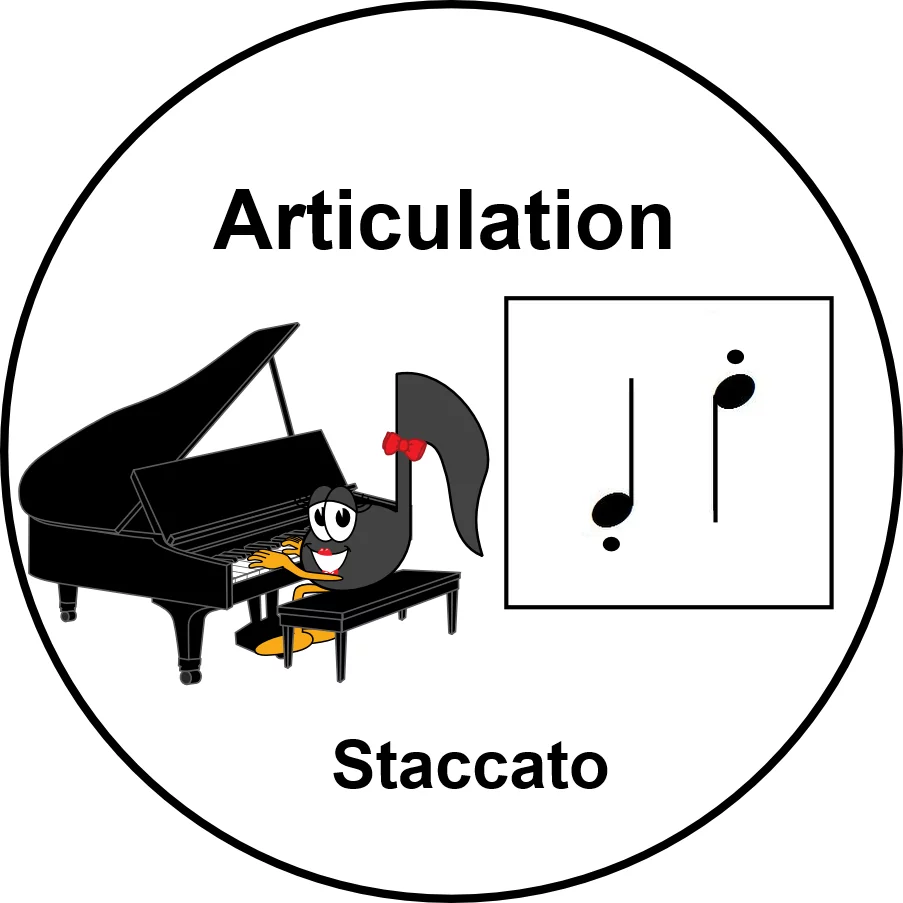
Articulation Signs tell us how to play a note. The Essential Dictionary of Music defines Articulation as "the manner in which notes are performed, such as staccato or legato".
In our first Blog in the Articulation Series, we explored the Accent Sign (or Accent Mark). In this Blog, the second Blog in the Articulation Series, we are going to discuss the Staccato.
The definition of Staccato is play a note "separated, short or detached."
The Norton Manual of Music Notation defines a Staccato as "a small dot placed above or below a notehead indicates shortening the value of the note by one half. It is a convenient, shorthand way of indicating a separation between notes.".
Let's explore the Staccato - What is it? What does it look like? Where and how do we write it?
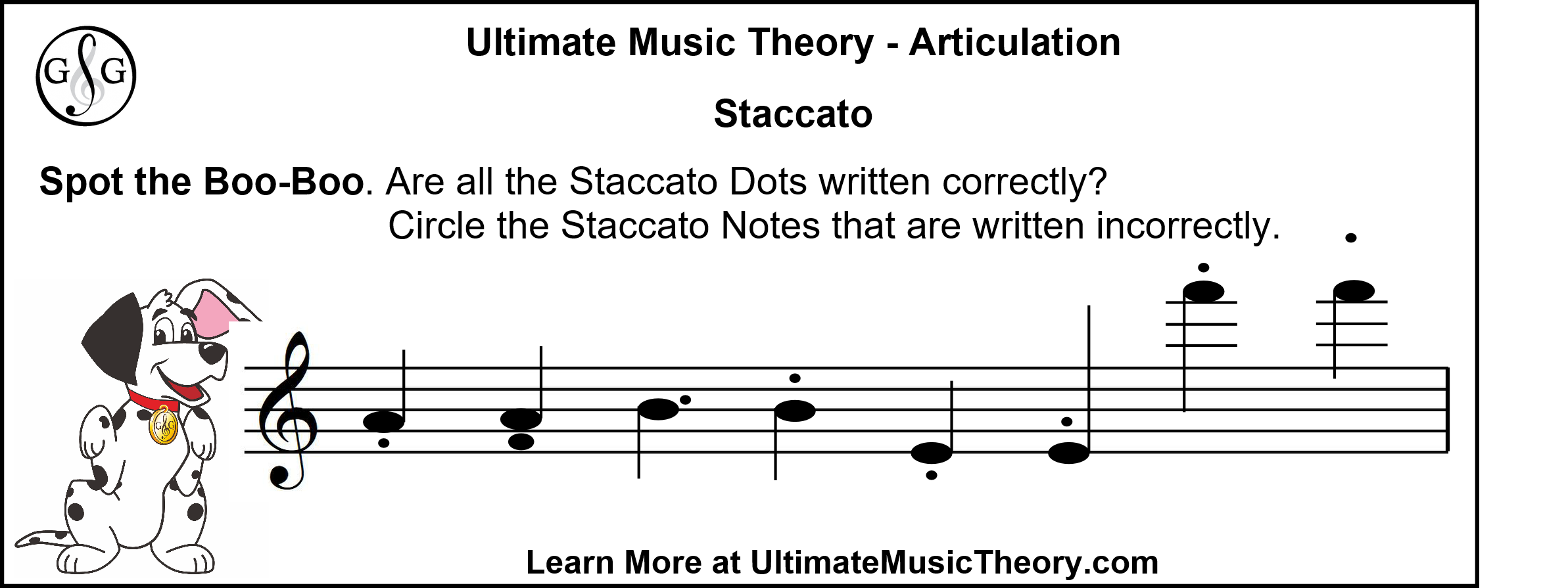
I love starting a Blog with a "Spot the Boo-Boo" Pop Quiz! Can you identify which Staccato Dots have been written correctly (and which have not been written correctly)? How confident are you with your answers?
Articulation - Staccato - What Does it Look Like?
The Staccato Dot looks like a small black dot!
So, how do you quantify a "small" black dot?
I tell my Students that I do not take out a magnifying glass and measuring tape to examine the Staccato Dot. However, I do "eyeball" it.
If the Staccato Dot is bigger than the notehead, or even half the size of the notehead, it is too big.
If the Staccato Dot is so small that it looks like a little pin prick, then it is too small.
A "just right" Staccato Dot looks to be about 1/6th to 1/4 of the size of the notehead.
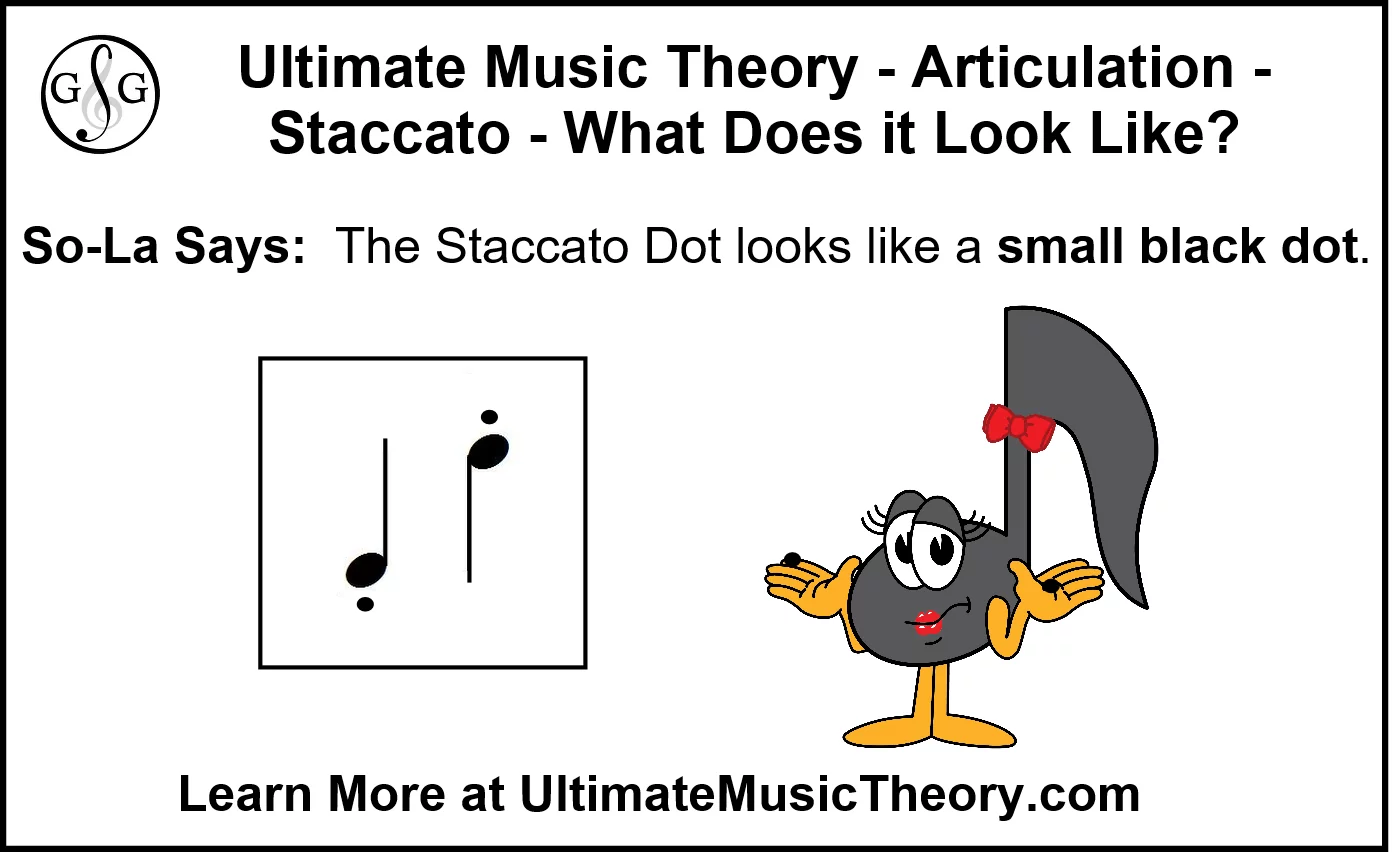
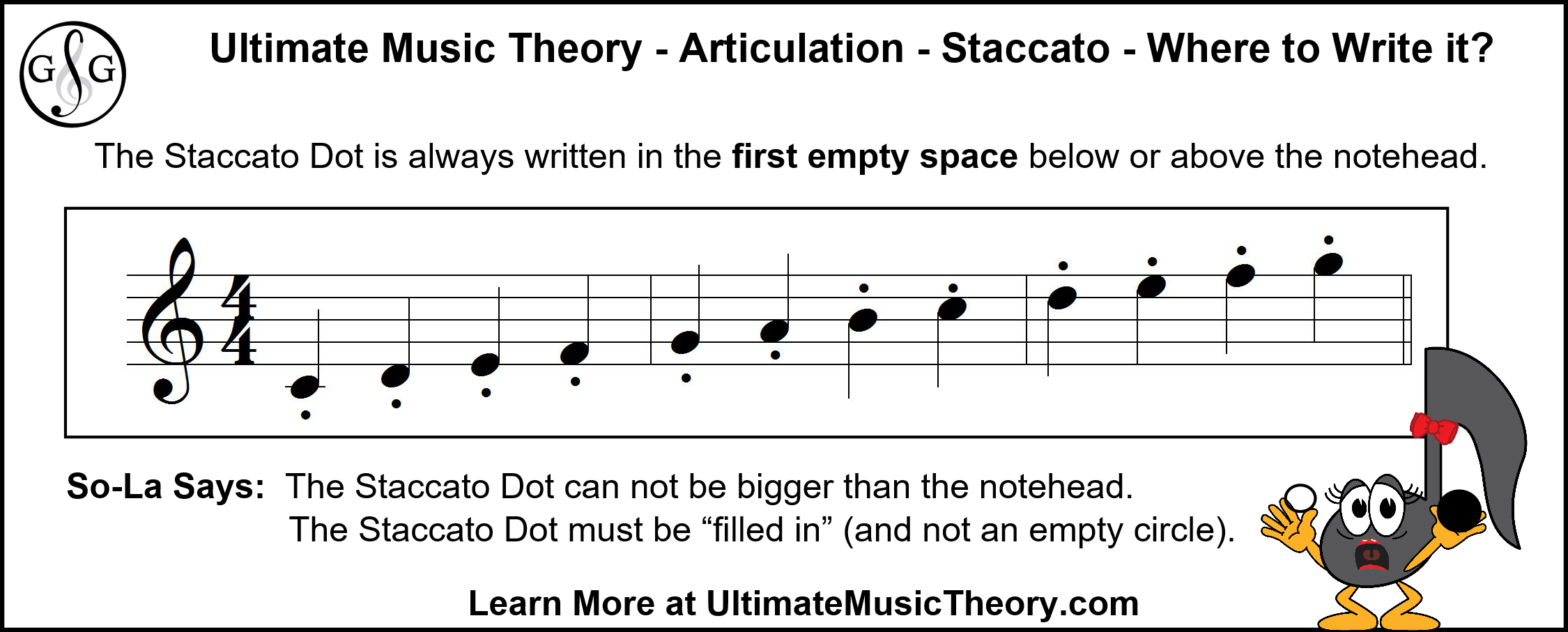
Articulation - Staccato - What is an "Empty Space"?
For a space to be considered an Empty Space, no part of the notehead (or the stem) can be written inside the space.
If you attempt to squish a Staccato Dot in the space with the notehead, it looks like a pom-pom.
If you write the Staccato Dot below a notehead, but the stem is going DOWN, then the Staccato Dot will be written in the same space as the stem. Again, that is a "no-no".
If you write the Staccato Dot above a notehead, but the stem is going UP, then the Staccato Dot will again be written in the same space as the stem appears.
Have some fun with your Whiteboard! Write several quarter notes. Remember that, when a note is written on the line, the notehead grabs right onto the line. When a note is written in a space, the notehead sits in the space (between the 2 lines).
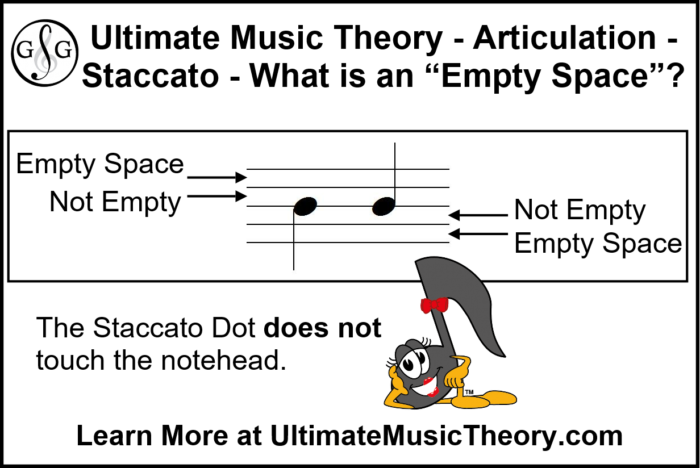
Ask your student to add the Staccato Dots. Try writing some correctly and some incorrectly. Then discuss why the Staccato Dot is written correctly or why it is written incorrectly.
I love exploring "wrong" ways to write theory, and then exploring the "right" ways to write theory. If we understand why it is "wrong", we will know how to make it "right".
One of our favorite games in my Studio is "Trick the Teacher". The Student gets to write several notes and articulation, but they must write some "wrong" and some "right". Then I (the Teacher) get to put check marks on the correctly written articulation/notes, and circle the articulation/notes that are written incorrectly.
Every once in a while, I will intentionally "miss" spotting a boo-boo, and my Students love that they "tricked me". Not only is this fun for the Student, but they also learn that mistakes happen - we make them and we just have to fix them. The world doesn't end, they don't yell at me and we don't throw the Whiteboard in the St. Lawrence River. We just fix our boo-boos!
Articulation - Staccato - What About Ledger Lines?
When a note is written on a ledger line, remember the exception to the Stem Rule - the stem of the note must be extended to touch Staff Line #3. This anchors the note to the staff.
You can read all about this in the Blog "Music Note Stem Length".
When writing a staccato note on a ledger line, remember to:
- extend the length of the stem to touch Staff Line #3.
- write the staccato dot above the notehead if the stem is down.
- write the staccato dot below the notehead if the stem is up.
- never add a ledger line above or below the staccato dot.
Do you notice how the Staccato Dots are written in what would be the next "space" either above or below the notehead (if you were to add an imaginary line).
The Staccato Dot can not be written far away from the notehead! It can not be written just on top (or just on the bottom) of the notehead. It has to be spaced "just right".
For more information on Ledger Lines, check out the blogs "Ledger Line Rules" and "Ledger Line Mistakes".
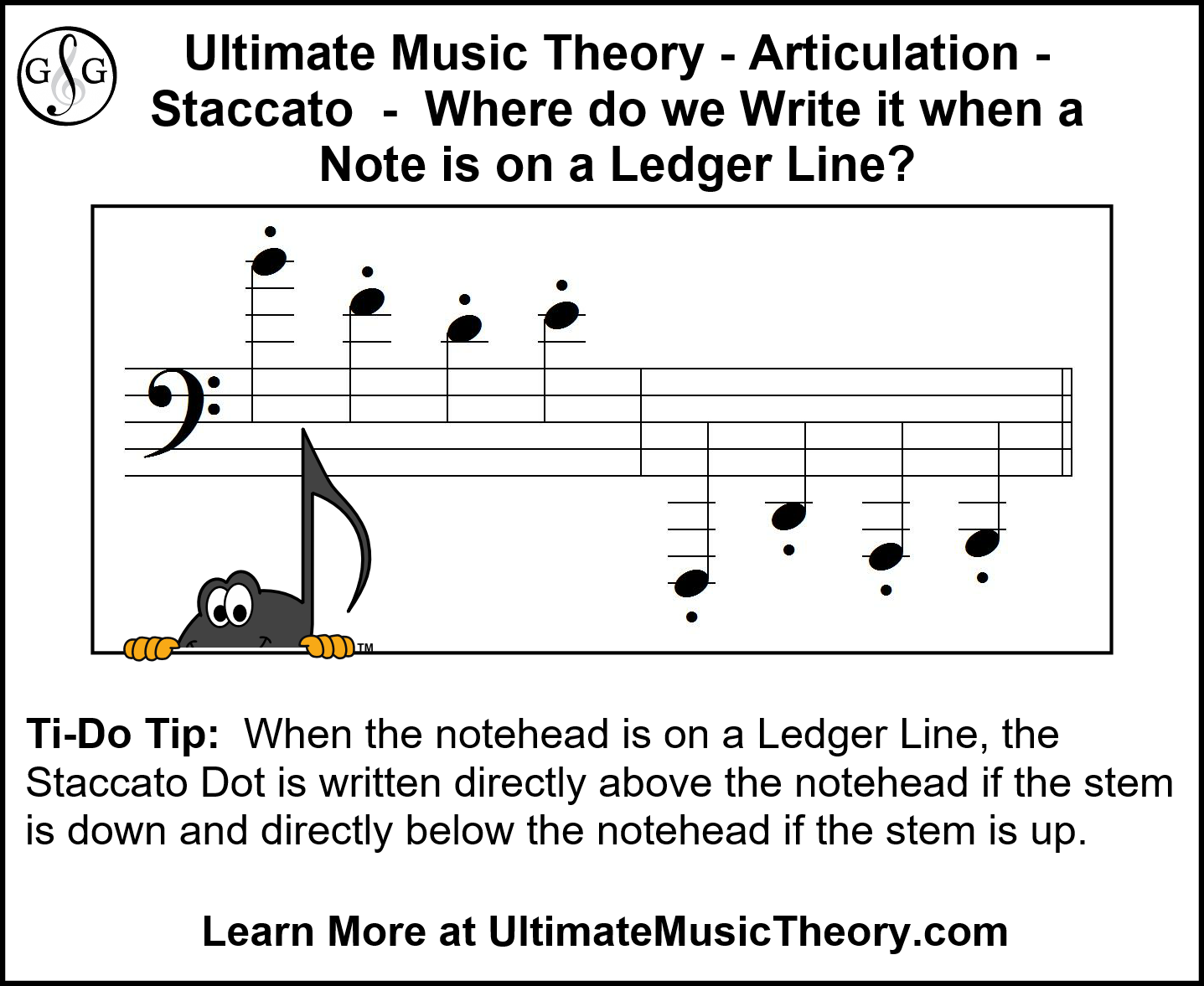
Articulation - Staccato Dot or Dotted Note?
For many Students and Teachers, understanding the difference between a Staccato Dot and a Dotted Note is tricky.
A Staccato Dot is written directly above the notehead or directly below the notehead. It creates a shorter sound. (This is different from playing quickly!)
A Dotted Note (for example, a Dotted Quarter Note or a Dotted Half Note) has a dot written to the RIGHT of the notehead. The Dotted Note dot is written in the space beside the notehead when the note is written in a space. The Dotted Note dot is written in the space above the line (to the right of the notehead) when the note is written on a line.
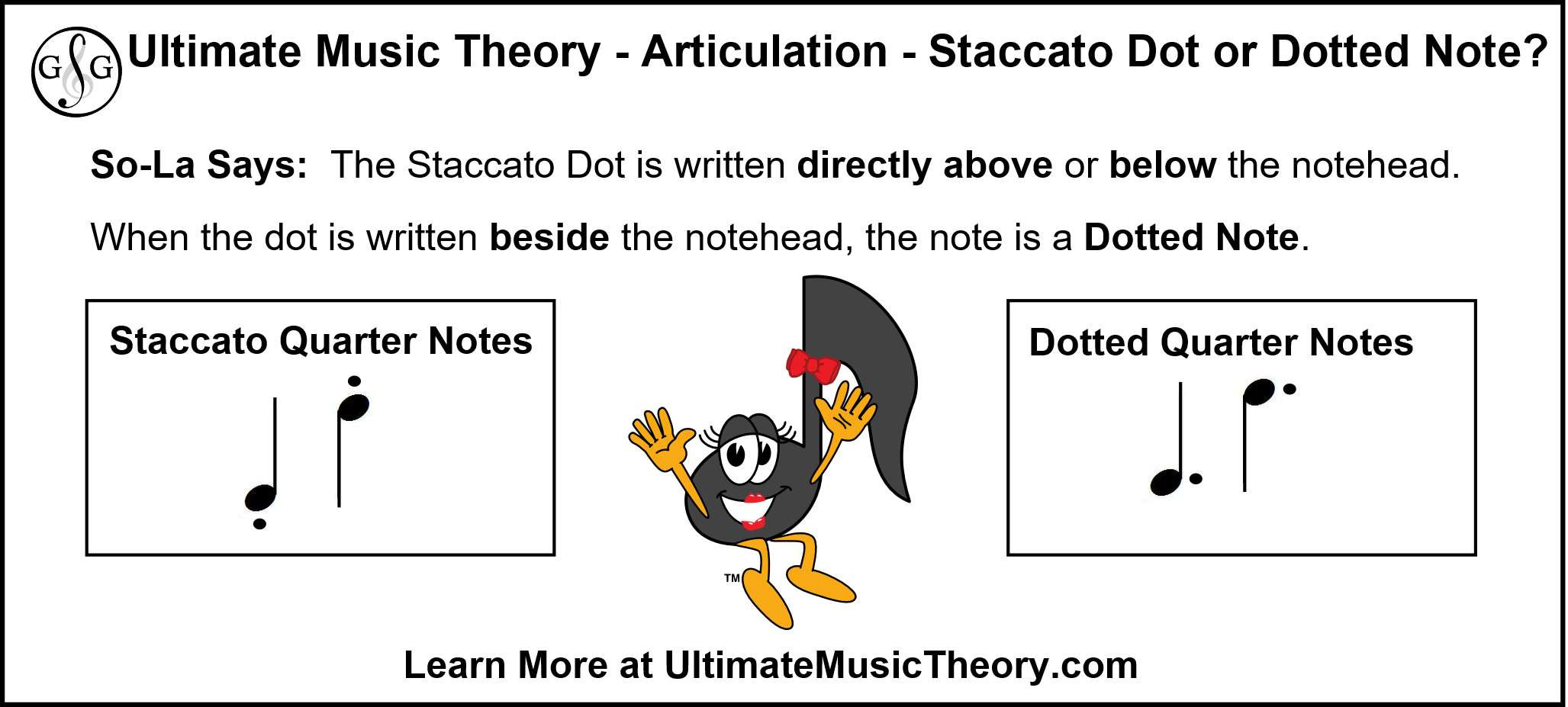
A Dotted Note dot increases the length of the note by one-half of the value.
I like to remind my students that:
- A dot above or below makes the sound "shorter".
- A dot beside (to the right) makes the sound "longer"
Do you have any other Memory Joggers that you use with your Students to help them understand this difference? If so, please post them in the comments. Thanks.
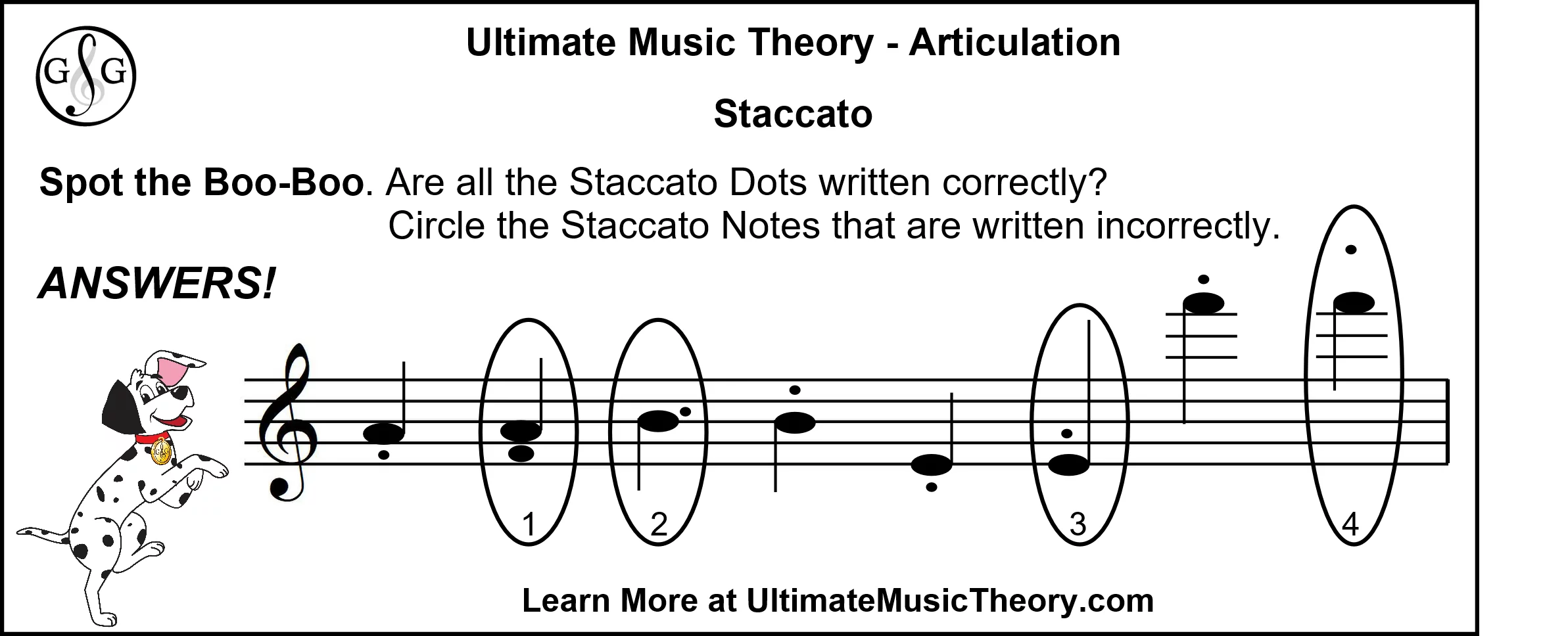
Articulation - Staccato - Spot the Boo-Boo Answers
Here are the reasons why the 4 circled notes are incorrect. If you did not find all 4, remember to read the Blog again. As Teachers, we need to know and understand why an answer is "incorrect".
- The Staccato Dot here is HUGE! (Not just a tiny bit big, but REALLY BIG!)
- Since the dot is written beside the notehead, this created a Dotted Quarter Note (and that is not the same as a Staccato Quarter Note).
- The Stem is up, so the dot must be placed below the notehead (and not above). Bonus Boo-Boo: that stem is too long.
- The Staccato Dot has been written too far above the notehead. Even though this note is on a Ledger Line, we still must place the Staccato Dot so that it is in that next empty space "area" above the notehead. Bonus Boo-Boo here too....can you find it?
If you are an Ultimate Music Theory Member, you can also download free Worksheets and Answer Sheets for this Blog:
- Worksheet #1 - Articulation - Staccato - Add the Stems and Staccato Dots;
- Worksheet #2 - Articulation - Staccato - Ledger Lines, Stems and Staccato Dots.
By adding that extra concept of "adding the stems", Students get to review the Stem Rule. This Rule is taught on page 40 in the Ultimate Music Theory Prep 1 Rudiments Workbook. I love the "pizza and donuts" memory jogger here too.
I hope that you learned something new about Staccato Dots!
Ultimate Music Teachers Membership
♪ LEARN ♪ PLAN ♪ TEACH ♪ GROW
The One & ONLY Ultimate Music Teachers Membership
To Become A UMT PRO!
Your Success Path Starts Here - Go To TeachUMT.com Today!
Keep on Learning... With a Smile and a Song!
Shelagh McKibbon-U'Ren


